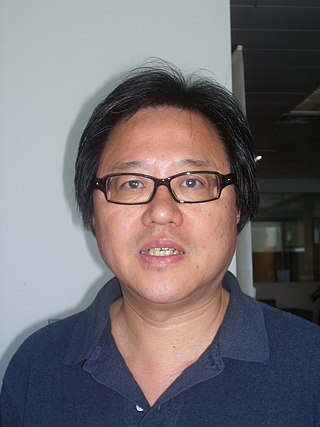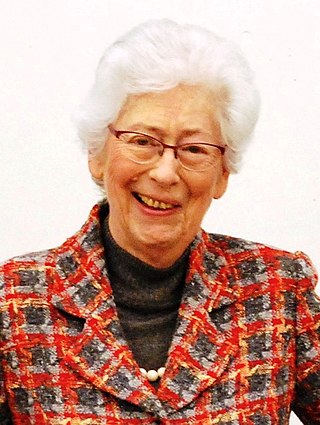
United Nations Security Council Resolution 242 (S/RES/242) was adopted unanimously by the UN Security Council on November 22, 1967, in the aftermath of the Six-Day War. It was adopted under Chapter VI of the UN Charter. The resolution was sponsored by British ambassador Lord Caradon and was one of five drafts under consideration.
The World Conference Against Racism (WCAR) is a series of international events organized by UNESCO to promote struggle against racism ideologies and behaviours. Five conferences have been held so far, in 1978, 1983, 2001, 2009 and 2021. Founded after World War II and the Holocaust as a dependent body of the United Nations, UNESCO started as soon as it was created to promote scientific studies concerning ethnic groups and their diffusion in public opinion to dispel pseudo-scientific rationalizations of racism. One of its first published works was The Race Question in 1950, signed by various internationally renowned scholars.
The Humanity Declaration is an imperial rescript issued by Hirohito, the emperor of Japan, as part of a New Year's statement on 1 January 1946 at the request of the Supreme Commander for the Allied Powers. In the rescript, which started with his citation of the Five Charter Oath of 1868, the Emperor denied the concept of his divinity, which would eventually lead to the promulgation of the new Constitution, under which the Emperor is "the symbol of the State and of the unity of the people".
Interpreting is a translational activity in which one produces a first and final target-language output on the basis of a one-time exposure to an expression in a source language.

Tomoe, commonly translated as "comma", is a comma-like swirl symbol used in Japanese mon. It closely resembles the usual form of a magatama.
Ex Tempore is a literary magazine published annually by the United Nations Society of Writers, or in French, Societé des écrivains des Nations Unies. The magazine was started in 1989. The editors seek contributions that are "crisp, impromptu, and as far away as possible from the stale UN jargon of declarations, resolutions and reports." 34 numbers have been issued, including the 180-page anniversary 30th compilation in all UN languages Arabic, Chinese, English, French, Russian and Spanish. The WHO publication New Special, with a circulation of 10,500 copies, published a two-page article by Sarah Jordan in February 2020 "Happy Anniversary" to mark 30 years of the publication of the literary journal. The April 2020 issue of International Diplomat carries an article entitled "30 Years United Nations Society of Writers" and notes "UNSW continues to advocate international solidarity in and through our cultural diversity, and would like to be seen as a herald of democracy. Over the centuries many authors and musicians have shared this vision of universal peace, e.g. Immanuel Kant in his famous essay on Perpetual Peace, Hugo von Hofmannsthal and Richard Strauss, who founded the Salzburger Festspiele in 1920 to consecrate music and drama to the task of unifying nations and cultures, expressing the ineffable in music – that highest aesthetic form and vital principle of humanity’s striving for transcendence."

The United Nations Interpretation Service is a part of the Meetings and Publishing Division (MPD) of the UN's Department for General Assembly and Conference Management (DGACM). Its core function is to provide interpretation from and into Arabic, Chinese, English, French, Russian and Spanish for meetings held at United Nations Headquarters, and those at other locations which the department is responsible for servicing. Interpretation is essential to the inter-governmental bodies for the proper conduct and smooth functioning of their deliberations.

Jeffrey Kin-Cheung Tao is a senior interpreter of the Chinese Interpretation Section at the United Nations headquarters in New York City.

Igor Korchilov is a top-level Russian-English conference interpreter who worked with Soviet leader Mikhail Gorbachev from 1987 to 1990, a period that covered the Cold War era.
Elisabeth Heyward was one of the participating interpreters during the Nuremberg Trials (1945–1949) held in the city of Nuremberg, Germany, after World War II. She was the wife of Dick Heyward, former senior deputy executive director of UNICEF. Her son is former CBS News president Andrew Heyward.
Herbert Feis was an American historian, author, and economist who was the Advisor on International Economic Affairs in the US Department of State during the Herbert Hoover and Franklin Roosevelt administrations.
The official languages of the United Nations are the six languages used in United Nations (UN) meetings and in which the UN writes all its official documents.
Danica Seleskovitch was a French conference interpreter, teacher and prolific academic writer on translation studies. Among other career milestones, she founded the Interpretive Theory of Translation.
Conférence Internationale Permanente d'Instituts Universitaires de Traducteurs et Interprètes, abbreviated as CIUTI, is an international academy associating translation and interpretation institutes affiliated to universities.
Jean-Pierre Armengaud is a French music educator, musicologist, researcher and pianist.

Susanna Vernon was a pioneer conference interpreter, one of the first to practice simultaneous interpretation, in which the interpreter interprets while the speaker is still speaking.
The United Nations (UN) has been portrayed in various works of popular culture, involving the organization, its bodies and agencies, its headquarters, peacekeeping activities, and UN workers. Modern works often portray it in a bureaucratic and sometimes ineffective light.

Marianne Lederer (born 1934) is a French translation scholar. Lederer further developed the Interpretive Theory of Translation together with Danica Seleskovitch, who first proposed the theory. Lederer also published several works on translation and interpreting pedagogy. Her works have greatly influenced interpreting and translation research and teaching internationally.

Isono Shrine (伊曽乃神社) is a Shinto shrine located in Saijō, Shikoku, Ehime Prefecture, Japan. It is a Beppyo shrine. It is notable for two different festivals: Saijo Matsuri, and Isono Jinja Sairei.








